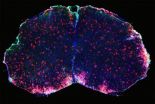(Press-News.org) In a systematic review and meta-analysis of 47 studies with 15,158 patients, Amit Singal (University of Texas Southwestern Medical Center) and colleagues found that patients with cirrhosis who underwent surveillance (via liver ultrasound with or without measurement of serum alpha fetoprotein) for hepatocellular carcinoma (HCC) had cancers detected at an earlier stage, were more likely to receive curative instead of palliative treatment, and had longer survival. Across all the studies, the pooled 3-year survival rate was 50.8% among the 4735 patients who underwent HCC surveillance, compared to 27.9% among the 6115 patients without prior surveillance (p<0.001).
The finding of longer survival persisted after the authors limited their review to studies that took into account lead time bias. Lead time bias, as it applies to this study, is the time between when a disease would normally be diagnosed without screening and when the disease is diagnosed with screening. Detecting disease earlier through screening can sometimes appear to increase survival when instead it only prolongs the time the person has the diagnosis. However, in this case, studies that accounted for lead time bias statistically still found that screening increased survival. Among the 6 studies that adjusted for lead time bias, those who underwent HCC surveillance had 3-year survival rates of 39.7%, vs. 29.1% among those who did not (p<0.001).
The authors note that while screening for HCC in patients with hepatitis B virus (HBV) infection is supported by a large randomized trial, no such randomized trials exist for patients with cirrhosis. Therefore the authors systematically reviewed published research that evaluated whether screening was associated with improved patient outcomes. While guidelines of the American Association for the Study of Liver Diseases and European Association for the Study of the Liver recommend surveillance with ultrasound every 6 months in high-risk patients (which includes those with chronic HBV infection and/or cirrhosis), the authors note that studies have shown that surveillance in the US is performed in less than 20% of these patients nationally, with lower rates among primary care physicians than gastroenterologists/hepatologists (physicians who specialize in caring for patients with liver disease).
A limitation of the study is that the studies were quite heterogeneous, suggesting benefits of surveillance may not be uniform among all patients, and studies did not include functional status, an important factor in determining appropriate treatment.
The authors conclude, "the preponderance of data that consistently demonstrate benefits should provide sufficient rationale to recommend HCC surveillance, even in the absence of a
randomized controlled trial among patients with cirrhosis."
INFORMATION:
Funding: This work was conducted with support from UT-STAR, NIH/NCATS Grant Number KL2 TR000453, NIH/NCATS Grant UL1-TR000451, and the ACG Junior Faculty Development Award awarded to AS. The content is solely the responsibility of the authors and does not necessarily represent the official views of UT-STAR, the University of Texas Southwestern Medical Center and its affiliated academic and health care centers, the National Center for Advancing Translational Sciences, or the National Institutes of Health. The funders had no role in study design, data collection and analysis, decision to publish, or preparation of the manuscript.
Competing Interests: The authors have declared that no competing interests exist.
Citation: Singal AG, Pillai A, Tiro J (2014) Early Detection, Curative Treatment, and Survival Rates for Hepatocellular Carcinoma Surveillance in Patients with Cirrhosis: A Meta-analysis. PLoS Med 11(4): e1001624. doi:10.1371/journal.pmed.1001624
Author Affiliations:
Department of Internal Medicine, University of Texas Southwestern Medical Center
Department of Clinical Sciences, University of Texas Southwestern
Harold C. Simmons Cancer Center, University of Texas Southwestern Medical Center
Department of Internal Medicine, Emory University
Contact:
Amit Singal
University of Texas
UNITED STATES
001-734-657-7894
amit.singal@utsouthwestern.edu
Screening for liver cancer in patients with cirrhosis
2014-04-02
ELSE PRESS RELEASES FROM THIS DATE:
Heart attack gene, MRP-14, triggers blood clot formation
2014-04-02
Right now, options are limited for preventing heart attacks. However, the day may come when treatments target the heart attack gene, myeloid related protein-14 (MRP-14, also known as S100A9) and defang its ability to produce heart attack-inducing blood clots, a process referred to as thrombosis.
Scientists at Case Western Reserve School of Medicine and University Hospitals Case Medical Center have reached a groundbreaking milestone toward this goal. They have studied humans and mice and discovered how MRP-14 generates dangerous clots that could trigger heart attack or ...
Will roe deer persist? Climate change spells disaster for species unable to keep up
2014-04-02
As the climate continues to change, it's unclear to what extent different species will be able to keep pace with altered temperatures and shifted seasons. Living organisms are the survivors of previous environmental changes and might therefore be expected to adapt, but are there limits?
According to research to be published in the Open Access journal PLOS Biology on April 1, some species may be much less able to cope with the effects of climate change than previously thought. The study, by Floriane Plard, Jean-Michel Gaillard, Christophe Bonenfant and colleagues, looked ...
Age-related decline in sleep quality might be reversible
2014-04-02
Sleep is essential for human health. But with increasing age, many people experience a decline in sleep quality, which in turn reduces their quality of life. In a new study publishing April 1 in the Open Access journal PLOS Biology, Scientists at the Max Planck Institute (MPI) for Biology of Ageing in Cologne have investigated the mechanisms by which ageing impairs sleep in the fruit fly. Their findings suggest that age-related sleep decline can be prevented and might even be reversible.
To uncover basic age-related sleep mechanisms, the Max Planck scientists studied the ...
Enhancers serve to restrict potentially dangerous hypermutation to antibody genes
2014-04-02
How B lymphocytes are able to direct mutations to their antibody genes to produce millions of different antibodies has fascinated biologists for decades. A new study publishing in the Open Access journal PLOS Biology on April 1 by Buerstedde and colleagues shows that this process of programed, spatially targeted genome mutation (aka. somatic hypermutation) is controlled by nearby transcription regulatory sequences called enhancers. Enhancers are usually known to control gene transcription, and these antibody enhancers are now shown to also act in marking the antibody genes ...
Going batty for jumping DNA as a cause of species diversity
2014-04-02
The vesper bats are the largest and best-known common family of bats, with more than 400 species spread across the globe, ranking second among mammals in species diversity.
Authors Ray et al., wanted to get at the root cause of this diversity by taking advantage of two vesper bat species whose genomes have recently been sequenced. They speculated that one cause of this diversity might be jumping elements in the genome, called DNA transposons, which are more active and recent in the evolutionary history of this family than any other mammal. Why and how this DNA transposon ...
Likely culprit in spread of colon cancer identified
2014-04-02
New research at Washington University School of Medicine in St. Louis and Vanderbilt University Medical Center in Nashville has implicated a poorly understood protein called PLAC8 in the spread of colon cancer.
While elevated PLAC8 levels were known to be associated with colon cancer, the researchers now have shown that the protein plays an active role in shifting normal cells lining the colon into a state that encourages metastasis.
The work appears April 1 in the Journal of Clinical Investigation.
"We knew levels of this protein are elevated in colon cancer," said ...
Gene therapy improves limb function following spinal cord injury
2014-04-02
Delivering a single injection of a scar-busting gene therapy to the spinal cord of rats following injury promotes the survival of nerve cells and improves hind limb function within weeks, according to a study published April 2 in The Journal of Neuroscience. The findings suggest that, with more confirming research in animals and humans, gene therapy may hold the potential to one day treat people with spinal cord injuries.
The spinal cord is the main channel through which information passes between the brain and the rest of the body. Most spinal cord injuries are caused ...
Mode of action of new multiple sclerosis drug discovered
2014-04-02
This news release is available in German. Just a few short weeks ago, dimethyl fumarate was approved in Europe as a basic therapy for multiple sclerosis. Although its efficacy has been established in clinical studies, its underlying mode of action was still unknown, but scientists from Bad Nauheim's Max Planck Institute for Heart and Lung Research and the University of Lübeck have now managed to decode it. They hope that this knowledge will help them develop more effective therapeutic agents.
Multiple sclerosis (MS) is a chronic inflammatory disease of the central ...
Well-rested flies
2014-04-02
This news release is available in German. Elderly flies do not sleep well – they frequently wake up during the night and wander around restlessly. The same is true of humans. For researchers at the Max Planck Institute for Biology of Ageing in Cologne, the sleeplessness experienced by the fruit fly Drosophila is therefore a model case for human sleeping behaviour. The scientists have now discovered molecules in the flies' cells that affect how the animals sleep in old age: if insulin/IGF signalling is active, the quality of the animals' sleep is reduced and they wake ...
Penn Medicine points to new ways to prevent relapse in cocaine-addicted patients
2014-04-02
(PHILADELPHIA) – Relapse is the most painful and expensive feature of drug addiction—even after addicted individuals have been drug-free for months or years, the likelihood of sliding back into the habit remains high. The National Institute on Drug Abuse estimates that 40 to 60 percent of addicted individuals will relapse, and in some studies the rates are as high as 80 percent at six months after treatment. Though some relapse triggers can be consciously avoided, such as people, places and things related to drug use, other subconscious triggers related to the brain's reward ...



